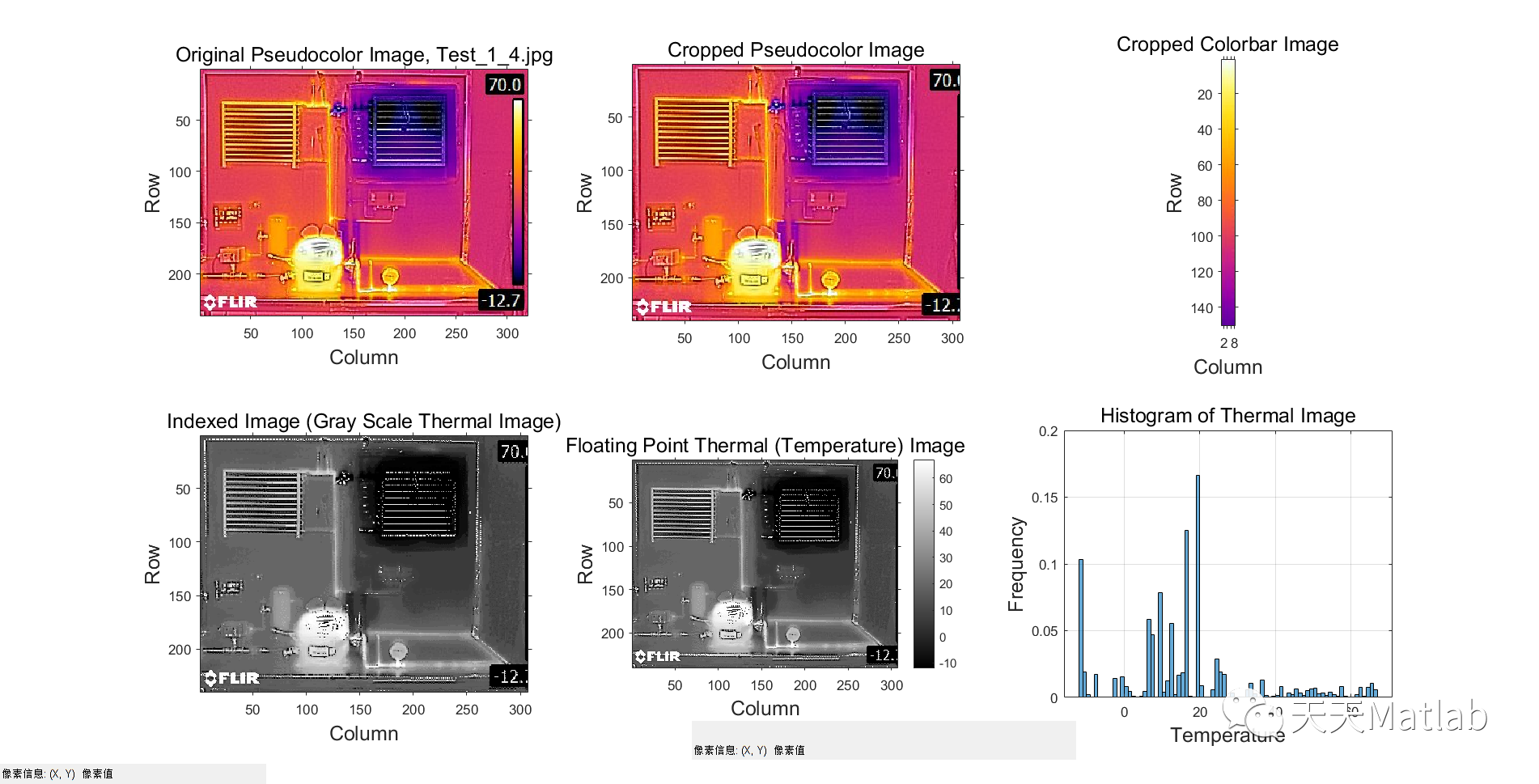✅作者简介:热爱科研的Matlab仿真开发者,修心和技术同步精进,matlab项目合作可私信。
🍎个人主页:Matlab科研工作室
🍊个人信条:格物致知。
更多Matlab完整代码及仿真定制内容点击👇
🔥 内容介绍
随着技术的不断发展,红外图像技术在许多领域中得到了广泛应用,尤其是在制冷系统性能评估方面。本文将介绍一种基于皮尔逊相关相似性分析(PCSA)和基于表面温度的 COP(COPST)制冷剂充装的制冷系统进行性能评估的方法。
首先,我们来了解一下红外图像技术在制冷系统性能评估中的应用。红外图像技术可以通过检测物体的表面温度分布来获取关于物体热特性的信息。在制冷系统中,红外图像技术可以用于检测制冷剂的充装情况、表面温度分布以及系统的热效率等。
在本方法中,我们使用了皮尔逊相关相似性分析(PCSA)和基于表面温度的 COP(COPST)两种技术来进行性能评估。首先,我们通过红外图像技术获取制冷系统各个部件的表面温度分布图像。然后,我们使用PCSA技术来分析制冷系统的表面温度分布图像之间的相似性。PCSA技术可以通过计算图像之间的相关系数来评估它们的相似程度。通过比较不同时间点的表面温度分布图像,我们可以了解制冷系统在不同工作状态下的性能变化情况。
接下来,我们使用COPST技术来评估制冷系统的热效率。COPST技术是一种基于表面温度的制冷系统性能评估方法,它可以通过计算制冷系统的制冷剂充装情况来评估其热效率。制冷系统的充装情况对系统的性能有着重要影响,过低或过高的制冷剂充装量都会导致系统性能下降。通过红外图像技术获取制冷系统的表面温度分布图像,我们可以根据图像中不同部件的温度差异来评估制冷剂的充装情况。如果制冷系统的制冷剂充装量合理,各个部件的温度差异应该较小。
通过将PCSA和COPST技术结合使用,我们可以全面评估制冷系统的性能。PCSA技术可以帮助我们了解制冷系统在不同工作状态下的性能变化情况,而COPST技术则可以评估制冷系统的热效率。通过这种方法,我们可以及时发现制冷系统存在的问题,并采取相应的措施进行调整和改进。
总结一下,基于皮尔逊相关相似性分析(PCSA)和基于表面温度的 COP(COPST)制冷剂充装的制冷系统进行性能评估是一种有效的方法。红外图像技术提供了一种非常有用的工具,可以帮助我们全面了解制冷系统的性能。通过使用PCSA和COPST技术,我们可以更好地评估制冷系统的工作状态和热效率,并及时采取相应的措施进行调整和改进。这将有助于提高制冷系统的性能和效率,减少能源消耗,并为环境保护做出贡献。
📣 部分代码
function [r p] = pearson_corr(X,Y)% [R,P] = FAST_CORR(X,Y)%% Enables the quick vectorized computation of pair-wise correlations% between corresponding columns of two large matrices.%% -Around 6.75 times faster than using corr.m in a for loop for 100% observations, 1000 variables% -Over 11 times faster than computing the full correlation matrix using% corr.m%% Inputs:% X & Y, size [n_observations x n_variables] matrices/vectors; both must% be of equal size to enable computation of pair-wise% correlations, column-by-column%% Outputs:% r, a vector of Pearson product-moment correlation coefficients of% length equal to the number of columns in X and Y; columns of X% and Y are correlated pair-wise% p, a vector of p-values corresponding to r%% Author: Elliot Layden, The University of Chicago, 2017% Check Data Sizes:[r1,c1] = size(X); [r2,c2] = size(Y);if r1~=r2error('''X'' and ''Y'' must contain the same number of rows/observations.')endif c1~=c2error('''X'' and ''Y'' must contain the same number of columns/variables.')end% Pair-wise Removal of Rows w/ NaN's:% Note: this removes any NaN-containing rows from entire matrices;% otherwise speed would be sacrificedif any(isnan(X(:))) || any(isnan(Y(:)))nan1 = isnan(X); nan2 = isnan(Y);nans = sum([nan1,nan2],2)>0;X(nans) = []; Y(nans) = [];end% De-mean Columns:X = bsxfun(@minus,X,nansum(X,1)./size(X,1));Y = bsxfun(@minus,Y,nansum(Y,1)./size(Y,1));% Normalize by the L2-norm (Euclidean) of Rows:X = X.*repmat(sqrt(1./max(eps,nansum(abs(X).^2,1))),[size(X,1),1]);Y = Y.*repmat(sqrt(1./max(eps,nansum(abs(Y).^2,1))),[size(Y,1),1]);% Compute Pair-wise Correlation Coefficients:r = nansum(X.*Y);% Calculate p-values if requested:% if nargout==2t = (r.*sqrt(r1-2))./sqrt(1-r.^2);p = 2*tcdf(abs(t),(r1-2),'upper');% endend
⛳️ 运行结果

🔗 参考文献






 本文介绍基于皮尔逊相关相似性分析(PCSA)和基于表面温度的COP(COPST)对制冷剂充装的制冷系统进行性能评估的方法。利用红外图像技术获取系统表面温度分布图像,结合PCSA分析性能变化,用COPST评估热效率,可及时发现问题并改进,提高系统性能和效率。
本文介绍基于皮尔逊相关相似性分析(PCSA)和基于表面温度的COP(COPST)对制冷剂充装的制冷系统进行性能评估的方法。利用红外图像技术获取系统表面温度分布图像,结合PCSA分析性能变化,用COPST评估热效率,可及时发现问题并改进,提高系统性能和效率。

















 1万+
1万+

 被折叠的 条评论
为什么被折叠?
被折叠的 条评论
为什么被折叠?










